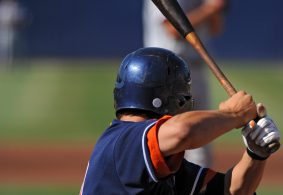This mini-series has been geared towards helping you make important decisions about summer baseball. The summer season can often creep up on us, and it’s important to give it serious thought and consideration. So far in this series we’ve discussed showcases and camps (Part I) and choosing a summer team or training program (Part II). In this final installment, we pull the curtains back on your summer and look at the big picture. How will you achieve the balance you need between the many important areas of the game and recruitment? This article will focus on successfully juggling three things that are incredibly important to college baseball hopefuls—development, exposure, and rest.
There are many reasons why we are constantly encouraging recruits to plan, plan, plan. One of these reasons is to keep the big picture in mind. If you look at your high school timeline, several things need to happen to play college baseball and those things are battling for your attention during the summer. First, you need be constantly improving. Your development as a baseball player and athlete are second to none when it comes to playing at the next level. This always needs to be prioritized. Second, you will need to find a way to “get exposure” to college coaches and show them you have the skills they want. Finally, you will need to find some time to give yourself a “rest” from competition to support good physical health.
For underclassmen, the balancing act is simple. There is no need to emphasize or focus on exposure, so you can effectively remove that from the summer equation and place your sole focus into development while giving yourself a break from active competition. If you are a superstar player who is ready for exposure in the underclassmen years, the exposure opportunities will find you. For upperclassmen, the juggling act can be a bit more complicated.
One of the biggest mistakes recruits make is prioritizing exposure over development and seeking out the attention of college coaches before they are ready. Having said that, at some point you will have to get in front of college coaches and show them what you can do to get recruited. The summer window also provides an opportunity to step away from competition and give your arm a rest. So, how do you accomplish all three?
The key to balancing these three important things lies in your ability to come up with a detailed development plan. You may be sick of hearing about development already, but if you want to keep playing baseball, get used to it. A quality development plan is the key because development is what leads to meaningful exposure, and a good plan also factors in necessary time away from the game to ensure health and prevent over-use injuries. So to put it simply, make sure your summer plan will help you improve as a player. Make that your focus. When you feel like you have the skills college coaches are looking for, start creating your own exposure by reaching out to schools with a well-written email that includes a skills video. At the same time, do your research on potential events (camps, showcases, etc.) and ways to get in front of coaches. If your emails aren’t creating the interest you want, find events that fit your budget and will get you in front of coaches from schools you are interested in. Finally, make sure your plan accounts for some “rest”.
We put rest in quotes because we don’t actually think you need to or should stop all baseball activity, although that is an option. By “rest,” we mean making sure to take a break from game competition and lower stress levels on your arm for a prolonged period of time. It doesn’t necessarily mean you should stop throwing or training altogether, simply that you need to give your arm a break from the high stress workload. Plan these breaks into your year ahead of time and stick to them. No showcase, camp, or tournament is worth jeopardizing your long-term health. Plan ahead make sure you include build-up/re-training periods, so you don’t go from complete inactivity (or even reduced activity) to throwing 100% in game play. This is incredibly important, as many over-use injuries are actually caused by the arm being under-prepared for a rapidly increased workload.
By now, you should have a very clear picture of what your summer options are and how you can make your important playing decisions, educated decisions. If your summer is already planned and you are happy with your decisions, consider using this same guide for setting up your fall ball. Good luck!







